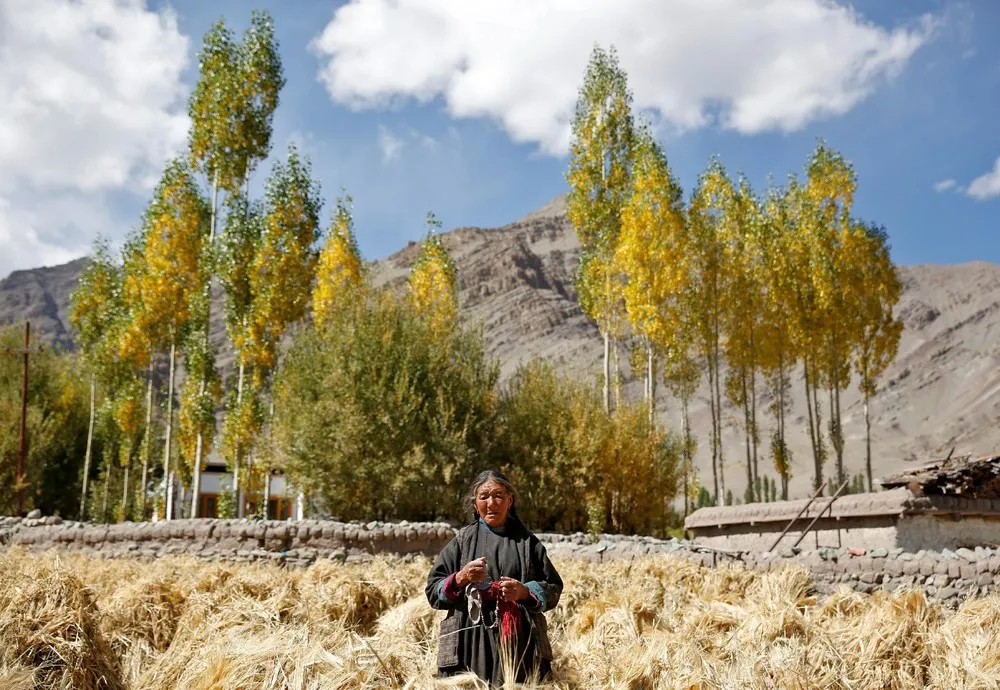|
Tashi Phutit, 81, a wheat farmer and housewife poses for a photograph in the village of Stok, 15 km from Leh, the largest town in the region of Ladakh, nestled high in the Indian Himalayas, India September 27, 2016. When asked how living in the world's fastest growing major economy had affected her life, Phutit replied: “Now we can eat better types of vegetables and we can wear better types of clothes. The problem is people are becoming greedy”. world's fastest-growing major economy that are eroding their age-old Buddhist culture but opening up new opportunities. People have long wrested a living from herding goats and tending wheat fields ringed by 6,000-m (19,685-ft) snow-capped peaks, while Buddhist monasteries dotting the landscape are a reminder of the region's ties to its eastern neighbour, Tibet. Traditions are fading fast as larger numbers of India's burgeoning middle class flock to holiday in the tranquillity of the lunar-like terrain. (Photo by Cathal McNaughton/Reuters)
|

